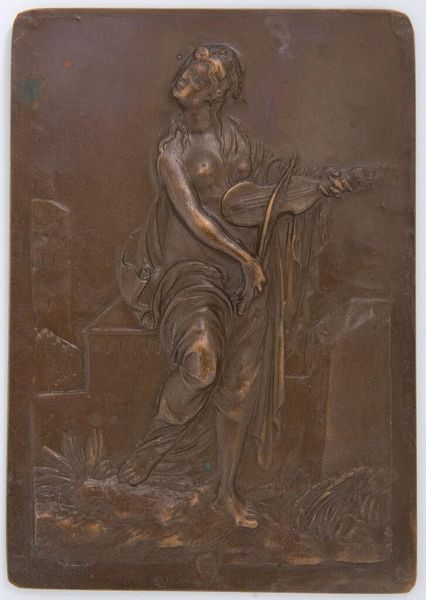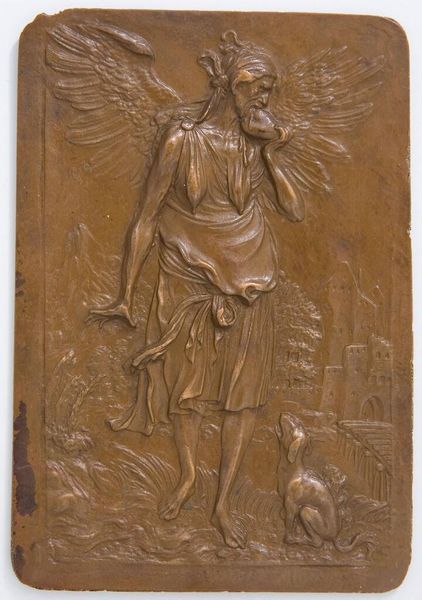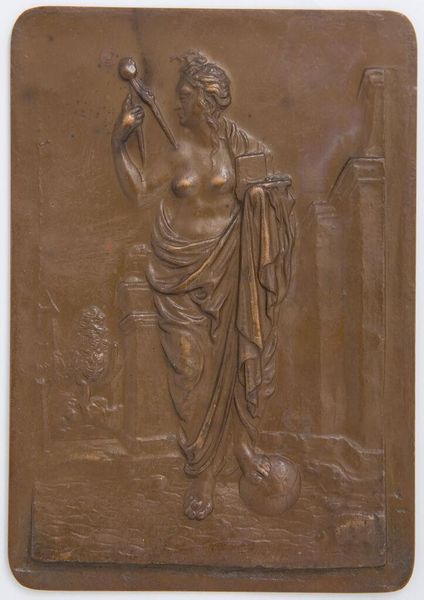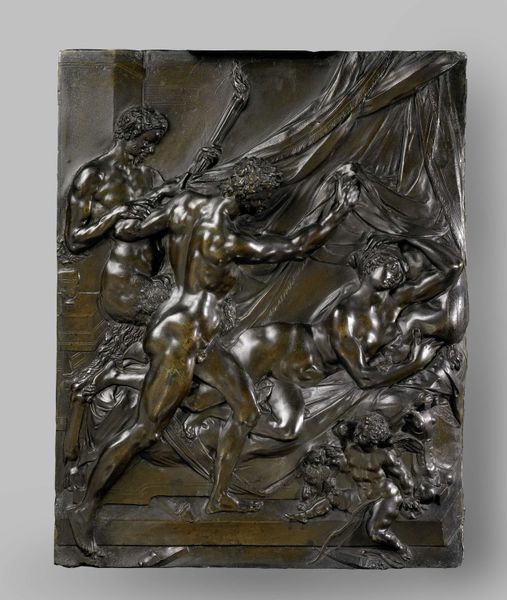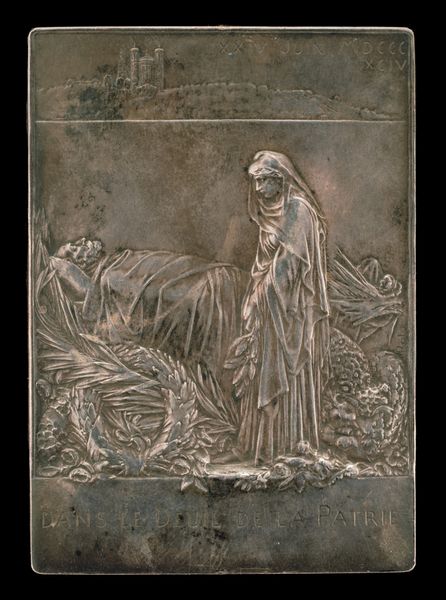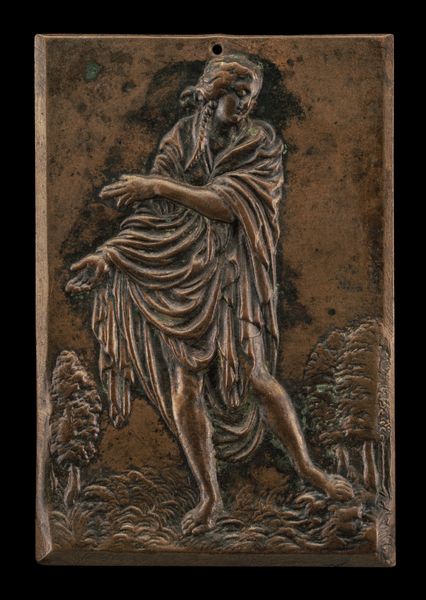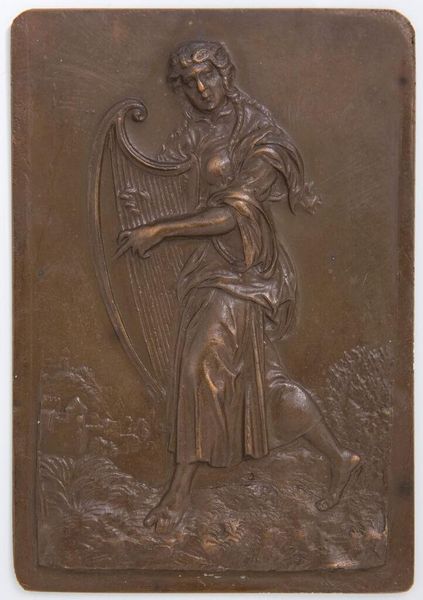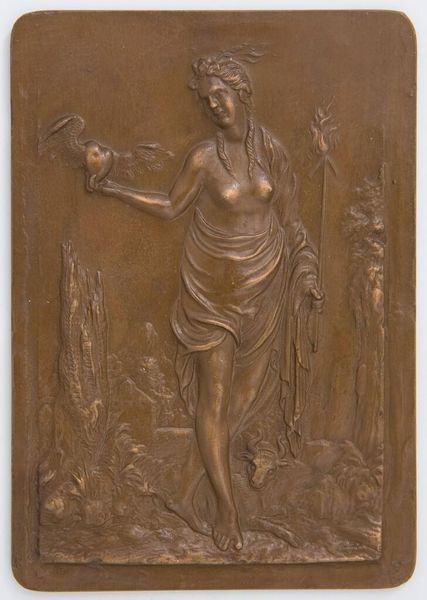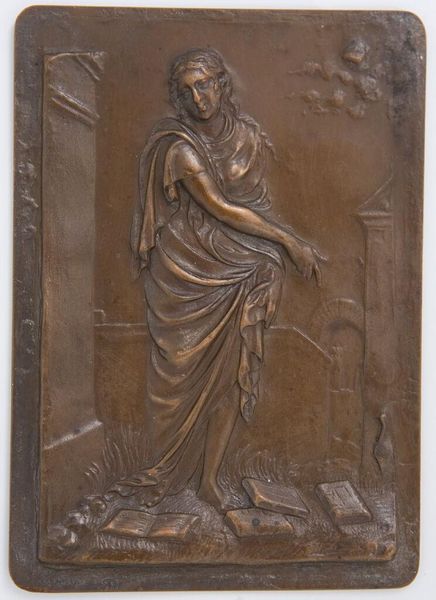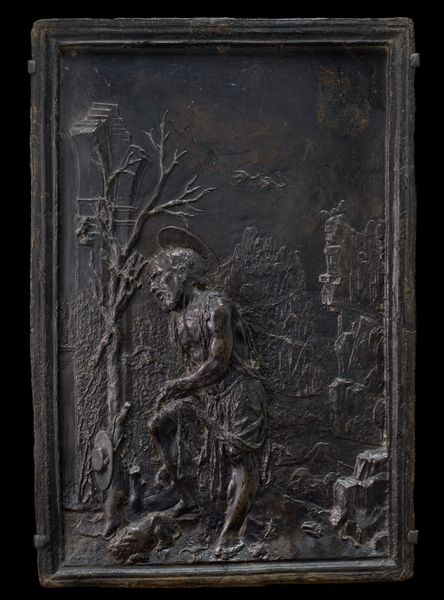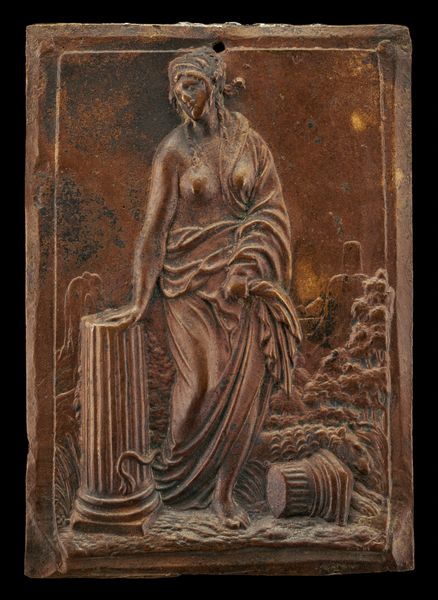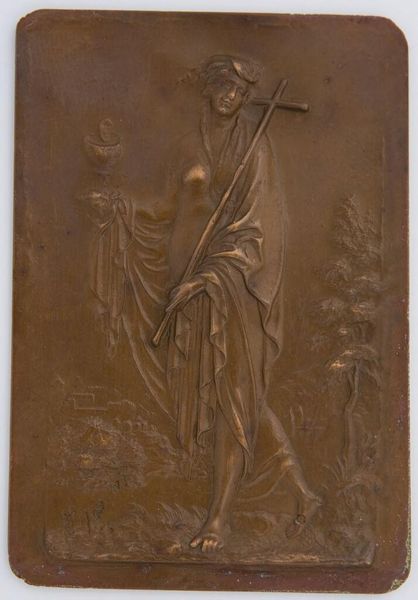
relief, bronze, sculpture
#
allegory
#
sculpture
#
relief
#
bronze
#
figuration
#
11_renaissance
#
sculpture
#
history-painting
Dimensions: overall: 40.6 x 33.9 x 7.6 cm (16 x 13 3/8 x 3 in.)
Copyright: National Gallery of Art: CC0 1.0
Curator: Antonio Lombardo’s bronze relief, “Peace Establishing Her Reign,” dates from around 1512. What are your first thoughts? Editor: It's intense, isn’t it? She’s poised, like a dark angel come to sort things out. There’s a definite drama unfolding, I want to know what's at stake here. Curator: Lombardo masterfully employs figuration and allegorical language. The sculpture presents a narrative of Peace, personified, descending with a symbolic rod of Asclepius, usually linked with medicine and healing. Editor: I’m picking up that she is actively taming a serpent with this rod? There's so much motion suggested by the cascading drapery, contrasting with the heavy materiality of the bronze. Curator: The texture contributes to the drama. Lombardo was clearly aiming for a compelling visual statement, full of movement, particularly striking considering the relatively small scale of the relief. Editor: The details, though—her dress is so wonderfully rendered! But the more I look at it, I find the tension of the serpent about to be subjugated oddly disturbing rather than comforting. Is peace truly achieved only through forceful control? Curator: That’s the complexity, isn't it? The Renaissance, with its humanist ideals, grappled with reconciling power and serenity, often conflating these concepts in their art and politics. Consider the period— rife with both artistic innovation and brutal conflict. Editor: It definitely gives you pause. Seeing “Peace” presented like this—it makes you think about the cost of maintaining order, not just then, but now. Is it just the crushing of dissent in fancy dress? Curator: Indeed. It serves as a potent visual commentary on the ambiguities of peace, making us question what price we are ready to pay for it. It clearly invites deeper consideration of Lombardo’s intent, or, rather, its relevance, down the corridors of time. Editor: Exactly. A forceful intervention instead of quiet compromise. It definitely prompts reflection, even after five centuries.
Comments
No comments
Be the first to comment and join the conversation on the ultimate creative platform.
